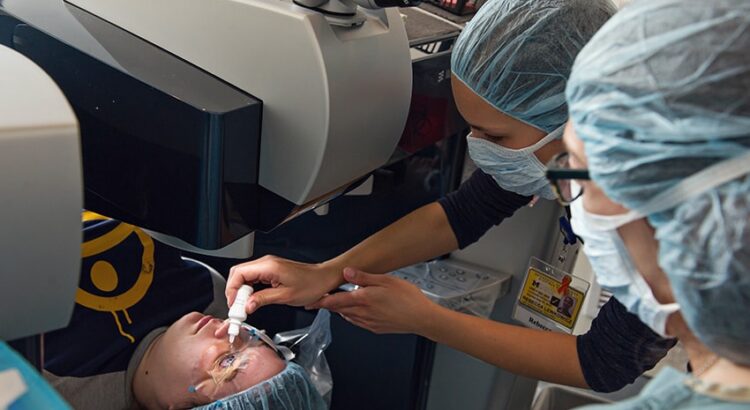There are lots of individuals who’d favour PRK surgery done in it than other laser eye surgeries like LASIK. They’ve already heard that it’s a better and safer eye surgery than LASIK surgery, but this isn’t always true. In the following paragraphs, I’ll be explaining what PRK surgery is and it is pros and cons.
To begin with, PRK surgery means photorefractive keratectomy. It’s a purely laser based eye surgery whereby an excimer laser can be used to fireplace high energy radiation in the eye. Rays released through the laser is of sufficient energy so that anything biological macromolecule that absorbs it’ll break lower inside a process known as photoablation. There’s computer that tracks the positioning of the patient’s eye 60 to 4000 occasions another to be able to realign the laser pulses for accurate ablation. Also, modern laser equipment nowadays will instantly focus on a person’s visual axis and work on getting rid of the cornea otherwise it’ll pause when the eye isn’t on axis. After breaking lower, there’s a obvious membranous like substance that covers the attention, that will permit the corneal epithelial cells to regenerate with time.
As PRK surgery doesn’t involve create flap, this sort of laser eye surgery avoids any type of flap complications that may arise, especially after LASIK eye surgery. There’s also many those who have gone through PRK surgery and also have had achieved positive results with this sort of eye surgery and also have not experienced any flaws or drawbacks, despite years following the initial surgery.
However, as with every laser eye surgeries, they ultimately get their disadvantages. Probably the most prominent drawback to PRK surgery when compared with LASIK is it includes a longer time to recover. Also, patients following the surgery might also complain of visual aberrations for example haloes, glare, starbursts and ghosting or double vision, much like publish LASIK surgery. Ought to be fact, visual disturbances from PRK surgery are usually worse than LASIK surgery as statistics reveal that only 42% of 97 consecutive cases were built with a uniform pattern of refractive power within the ablation zone. Additionally, 10% of those cases experienced distortions severe enough that they are constantly complaining about visual disturbances inside their central field of view.
Another essential point about PRK surgery is it isn’t appropriate for individuals rich in levels of myopia, or short-sightedness. Even though it is technically easy to work on someone having a high prescription of myopia, research has proven these patients possess a strong inclination to regress enough where the surgery has really undercorrected their vision. This really is clearly not really a favourable outcome and options to PRK surgery should be thought about.





